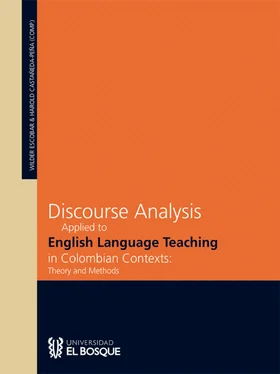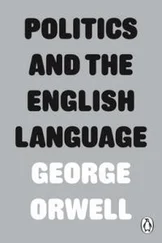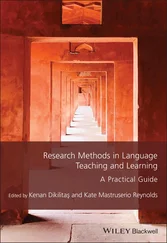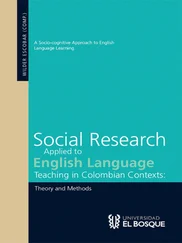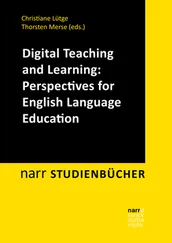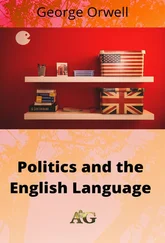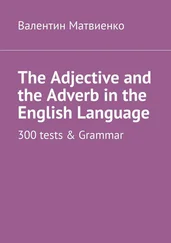It is within such heterogeneous approaches that this chapter aims at briefly sketching the discourse analysis applied to classroom language. In order to achieve this goal, how discourse studies have viewed classroom language will be described; second, discourse analysis in general educational settings and the feminist post-structuralist approach will be outlined; third, discourse analysis in foreign and second language educational settings will be traced; fourth, the discussion about which methodology is appropriate to investigate classroom discourse will be summarized. Finally, I will introduce my own discussion about researching classroom discourse in foreign/second language instructional settings. The review proposed is not exhaustive but comprehensive in scope.
Classroom language viewed as discourse
What is classroom language? Does it differ from conversation? Is it a type of text? Is it a type of discourse? These are four important questions whose answers will provide scientific research with a less distorted view of discourse analysis in relation to classroom language. The expression ‘scientific research’ is as wide-ranging as it is intended to be and is used here comprehensively. As was stated in the introduction, this is due to the evolution discourse analysis has experienced regarding classroom discourse. The difference between classroom language and a conversation could be precisely identified from two properties that here will be called symmetry and level of formality. I will use the following transcript to illustrate these two concepts.
| Interlocutor 2 |
(4-6) […] |
| Interlocutor 1 |
(7) Yes. […], they showed you a Pharaoh’s body mummified on |
|
(8) ‘Blue Peter.’ |
| Interlocutor 2 |
(9) Did they? |
|
(10) When was this? |
| Interlocutor 1 |
(11) On Monday I think. |
| Interlocutor 2 |
(12) Good gracious me, that’s fairly recently. |
|
(13) Do you remember which one it was? |
| Interlocutor 1 |
(14) No, […]. |
| Interlocutor 2 |
(15) No. |
|
(16) […] |
The transcript could represent two different situations and it could be assumed that I am accepting that both classroom language and a conversation are the same. That’s not my intention and I will provide a context for each situation to amend my initial assumption. First, it could be a small chat between two friends in which one is offering new information about a recent visit he/she has made to a museum. Second, this transcript could be an excerpt on a lesson about history or chemistry on mummified bodies. Symmetry as defined in any dictionary entry implies proportion. Thus, any linguistic interaction is symmetrical if the participants share on an equal basis their turn taking and their right to interrupt with specific purposes such as making new stands, agreeing or verifying if the interlocutor is still involved in the exchange. This example seems to be asymmetrical; interlocutor 1 is sharing a new topic with interlocutor 2 and they organized the interaction by assuming the role either of the questioner or of the answerer. In an ideal conversation, the relationship seems to be more symmetrical. This means that the participants talk or hold the conversation by distributing somewhat evenly their right to speak and express their thoughts. In this example, this does not happen because one of the interlocutors displays longer turns, makes more comments and asks more questions.
Regarding classroom language, this asymmetry is normally accepted, but this does not necessarily imply it should be acceptable that the teacher has a privileged position due to her/his officially assigned role to guide a teaching/ learning process. In that sense, teachers hold the power to distribute turns of speaking, to formally assess what is said, to interrupt, etc. However, neither classroom language nor conversations occur out of context. Filling in the square brackets [purposefully left blank] and adding lines 1-6, and 17 contextualizes the conversation and the interaction becomes the following:
| Interlocutor 2 |
(1) What is the word then for doing/putting this body in its mummy |
|
(2) case? |
| Interlocutor 1 |
(3) Mummify. |
| Interlocutor 2 |
(4) [They mummified it that means-yes. They drained out all the |
|
(5) liquid from the body and rubbed special preserving oils into the |
|
(6) body, wrapped it in bandages and put it in the case.] |
| Interlocutor 1 |
(7) Yes. [Miss], they showed you a Pharaoh’s body mummified on |
|
(8) ‘Blue Peter.’ |
| Interlocutor 2 |
(9) Did they? |
|
(10) When was this? |
| Interlocutor 1 |
(11) On Monday I think. |
| Interlocutor 2 |
(12) Good gracious me, that’s fairly recently. |
|
(13) Do you remember which one it was? |
| Interlocutor 1 |
(14) No, [Miss]. |
| Interlocutor 2 |
(15) No. |
|
(16) [What about you Paul?] |
| Interlocutor 3 |
(17) No, Miss. |
It is obvious now that interlocutor 2 is a teacher and both interlocutors 1 and 3 are students. Most of the time, the teacher is asking questions (lines 1-2, 10 and 13), which sometimes are also used to call students’ attention to something or to organize turns (line 16). The teacher uses other opportunities to inform her students (lines 4-6) or to assess what students have just said (line 12). On the students’ side, the number of assumed turns seems to be comparatively smaller in this particular excerpt. Lines 7 and 8 appear to be used by the student to add a commentary to what is being stated by the teacher. Lines 11, 14 and 17 are straightforward answers to questions addressed by the teacher. According to this example, taken from Sinclair and Coulthard (1975, p. 85-86), due to particular contexts and to particular participants’ personalities, both classroom language and conversation could be considered asymmetrical.
On the other hand, because of the traditional role imposed on teachers, classroom language most of the time may be more asymmetrical compared to conversations. Cazden (1988), considers the construction of a lesson structure, mainly talks about variation in the speaking rights; as in the example above, she mentions that teachers tend to keep talking more than students do. She implies that there are deviations to the structure because basically classroom talk is context-shaped. However, sometimes regarding its structure, “classroom talk becomes more like informal conversation–not the same as conversation” (Cazden, 1988, p. 55). It should be recalled that the transcript provided was introduced either as a chat between friends or as a history/chemistry class. All these assumptions depend on many variables; for example, according to expected learning outcomes, both teachers and students could play an active role in the construction of classroom interactions. They might or might not negotiate knowledge co-construction according to motivational levels, attention span, and other factors (none of which are considered here).
Level of formality can be an alternative criterion to define a linguistic exchange. The dichotomy formal/non-formal attempts to describe to what extent a situated interaction makes evident who the participants are and how they relate to each other. Again, classroom language could be assumed as spoken in the formal context of education where the teacher structures the exchanges and socializes students through the use of language. Notice how students in the example taken from Sinclair and Coulthard always attached the word Miss to most of their answers (lines 7, 14 and 17). I should also say that the word social here is used in a very wide-ranging way and that it is not my purpose now to discuss its appropriateness in describing educational purposes. Therefore, back to the initial point and, as a generalization, a conversation is typically either a formal or a non-formal co-construction and, this should be judged by the circumstances in which a particular conversation takes place.
Читать дальше
